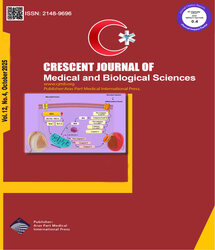

| Original Article | |
| Autecology Essential Oil Composition, Antibacterial, Anti Candidacies and Ethnopharmacological Survey of Ferula Gummosa L. As Anti Infection to Treat Of Vaginal Infections in Traditional Medicine of Razavi Khorasan Province (North East of Iran) | |
| Masoumeh Mazandarani1, Zeinab Zeinali2, Mohammad Ghafourian3 | |
| 1Department of Botany, Gorgan Branch, Islamic Azad University, Gorgan, Iran 2 Department of horticulture, Gorgan University of Agricultural sciences and Natural resources, Gorgan, Iran 3Medical student , Mazandaran University of Medical Sciences, Ramsar, Iran |
|
|
CJMB 2015; 2: 042-047 Viewed : 4658 times Downloaded : 3388 times. Keywords : Candida, Ethnopharmacology, Essential, Ferula, Oils, Vaginitis |
|
| Full Text(PDF) | Related Articles | |
| Abstract | |
Objective: Ferula gummosa Boiss. (Apiaceae family), which has been used in traditional medicine of Iran
as anti vaginal infection, anti-sinusitis, sedative, and anti-inflammation. Materials and Methods: In this research, the gums of plant root were collected from the Heidary nature reserve in Razavi Khorasan Province (Iran) in August 2012. The ethnopharmacological data about traditional uses of plant were obtained from the rural healers (women 67-75 year) of this region. Essential oil of the plant root gum was obtained by hydrodistillation (Clevenger apparatus) and was analyzed by gas chromatography–mass spectrometry. Antibacterial activity of plant ethanolic extract was studied in vitro against Candida albicans and 9 Gram-positive and negative bacteria using well method and the minimum inhibitory concentration (MIC) assay. Results: Results showed that a total of 39 components have been identified in the plant sampl oil, representing 81% of the total oil and β-pinene (19.88%), guaiol (8%), shyobunone (6.96%), delta-cadinene (4.65%), α-pinene (3.16 %), β-phellandrene (3.28%) and myrtenol (2.8%), were the main essential oil composition, respectively. The results from antibacterial screening (Table 2), were showed that C. albicans (25.2 ± 1.6), Staphylococcus epidermidis (23.6 ± 0.7 mm), Staphylococcus aureus (21.3 ± 0.2 mm), Escherichia coli (16.5 ± 0.8 mm), Bacillus cereus (19.5 ± 0.1 mm), Enterococcus faecalis (17.2 ± 0.8 mm) and Pseudomonas aeroginosa ( 17.8 ± 0.2 mm ) inhibition zone and MIC (35.4-112 μg/ml) were the most sensitive pathogenes to the plant extract respectively, which followed Shigella (12.3 ± 0.3 mm) and Klebsiella pneumonia (12.5 ± 0.2 mm) were found to be moderate sensitive bacteria and then the Salmonella typhymorium which completely was resistant to plant root extract. Conclusion: According to these results, it can be concluded that the extract of F. gummosa L. have suitable antimicrobial and anti-Candidacies activity, which can be used as natural anti-infection to treat of many infection diseases, especially in vaginal infection. |
Cite By, Google Scholar
Online Submission System
 CJMB ENDNOTE ® Style
CJMB ENDNOTE ® Style
 Tutorials
Tutorials
 Publication Charge
Medical and Biological Research Center
About Journal
Publication Charge
Medical and Biological Research Center
About Journal
Aras Part Medical International Press Editor-in-Chief
Arash Khaki
Deputy Editor
Zafer Akan

















